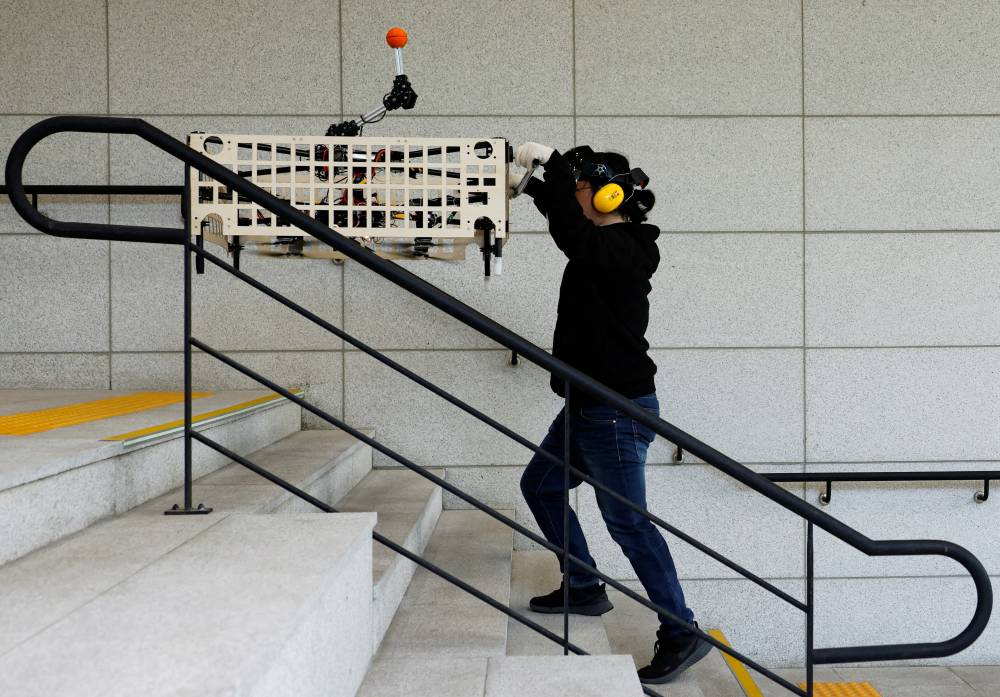South Korea team showcases drone that serves as ‘flying shopping cart’

SEOUL—South Korean researchers have developed a transport drone flying on multiple flexible rotors that self-correct to stay level in flight and can be used as a “flying shopping cart” to carry goods over uneven terrain such as stairs.
The prototype developed by a Seoul National University of Science and Technology team has a cargo platform mounted on top of a multi-rotor drone and is handled by a person using gentle force to guide the hovering aircraft.
Members of the team demonstrated the hovering platform with a handle bar much like one on a push shopping cart moving objects up and down stairs and loading boxes on top as it hovered mid-air and maintained its balance by using a center of mass estimation algorithm.

To move objects over uneven terrain or stairs when a wheeled cart cannot, the drone responds to human control with what the developers call a physical human-robot interaction technique that anticipates human intentions for smooth flight, said Lee Seung-jae, professor of mechanical system design engineering.

‘More than a flying cart’
But the broader focus of Lee’s team is not on developing a shopping cart to be used over steps, but instead on applications that would use a drone with reliable horizontal stability without pitching and rolling.
“The Palletrone can be more than a flying shopping cart,” he said, referring to the name the team gave the prototype by joining the words pallet, which is the platform for cargo on top, and drone.

Lee’s team has tested a platform to carry objects up to 3 kg, and concedes commercial applications for cargo transportation at such a small weight easily carried by humans is limited.
Flying taxis
Still, the mechanism that allows the drone to change directions in flight without banking and to maintain level attitude has applications for delivering sensitive or fragile payloads, Lee said.
But Lee’s team is looking further ahead for the technology’s potential use for uncrewed “flying taxis” carrying humans and for drones to be “refueled” mid-air, by changing batteries so the aircraft do not need to return to base for a fresh charge.

Multirotor drones are inherently limited in speed and range compared to fixed-wing drones but have better control and maneuverability, including the ability to hover in flight.
They have been used to deliver cargo, food and medical supplies, but commercial applications have been limited largely because it is impractical to increase the size of the battery enough to transport a heavier payload over a longer distance.
Seoul Tech’s work was published in IEEE Robotics and Automation Letters this year, the publication of the Institute of Electrical and Electronics Engineers based in New York.
Reuters, the news and media division of Thomson Reuters, is the world’s largest multimedia news provider, reaching billions of people worldwide every day. Reuters provides business, financial, national and international news to professionals via desktop terminals, the world's media organizations, industry events and directly to consumers.

















